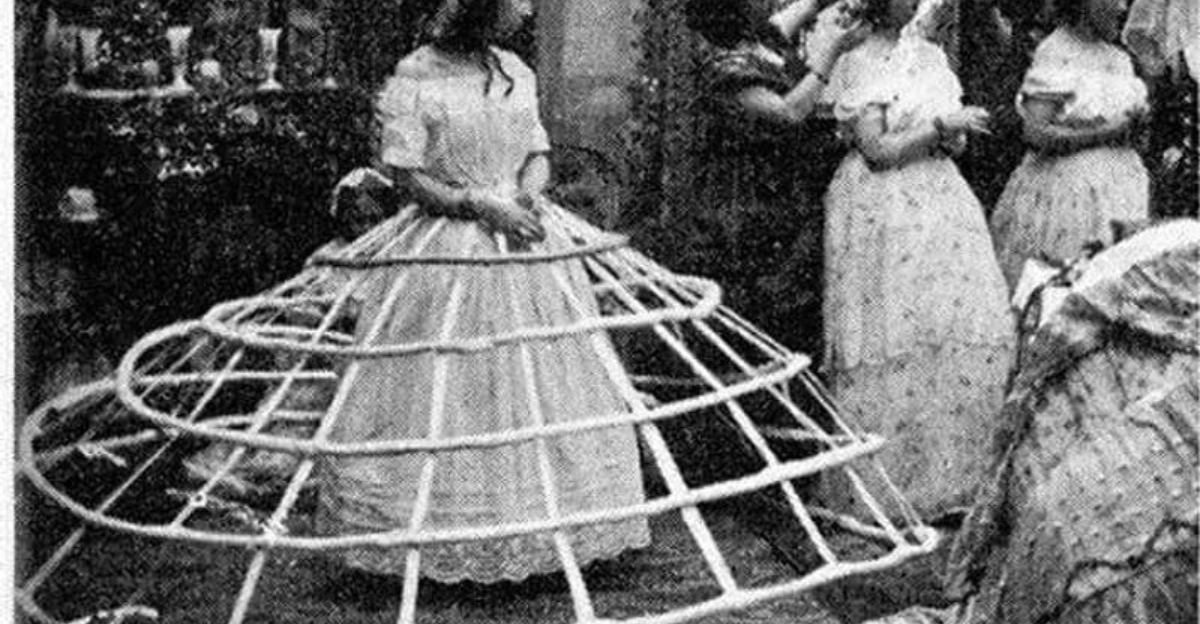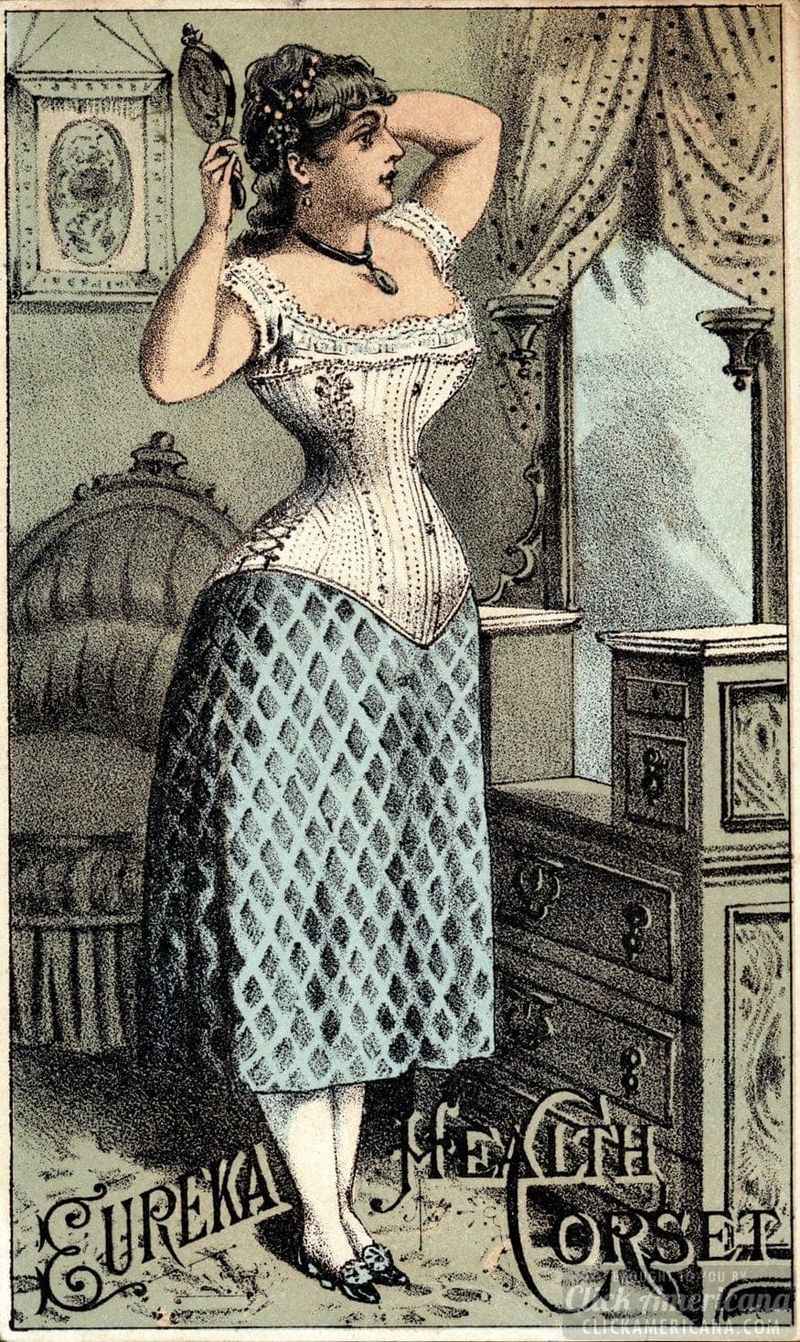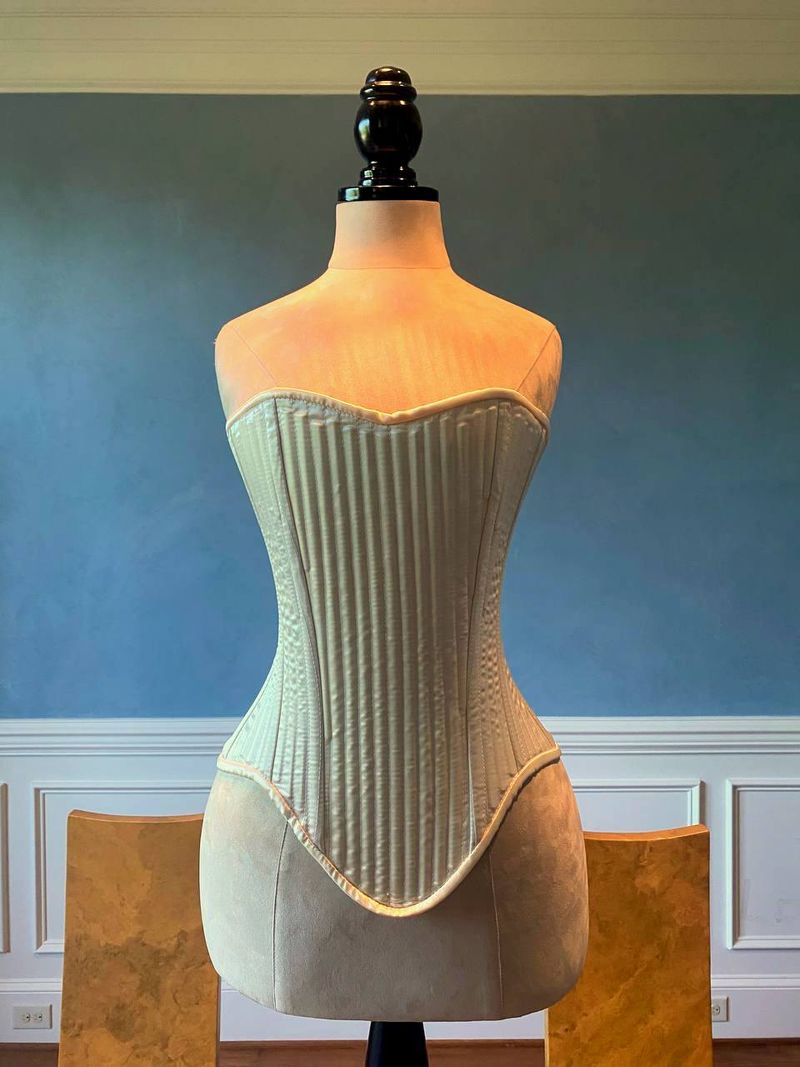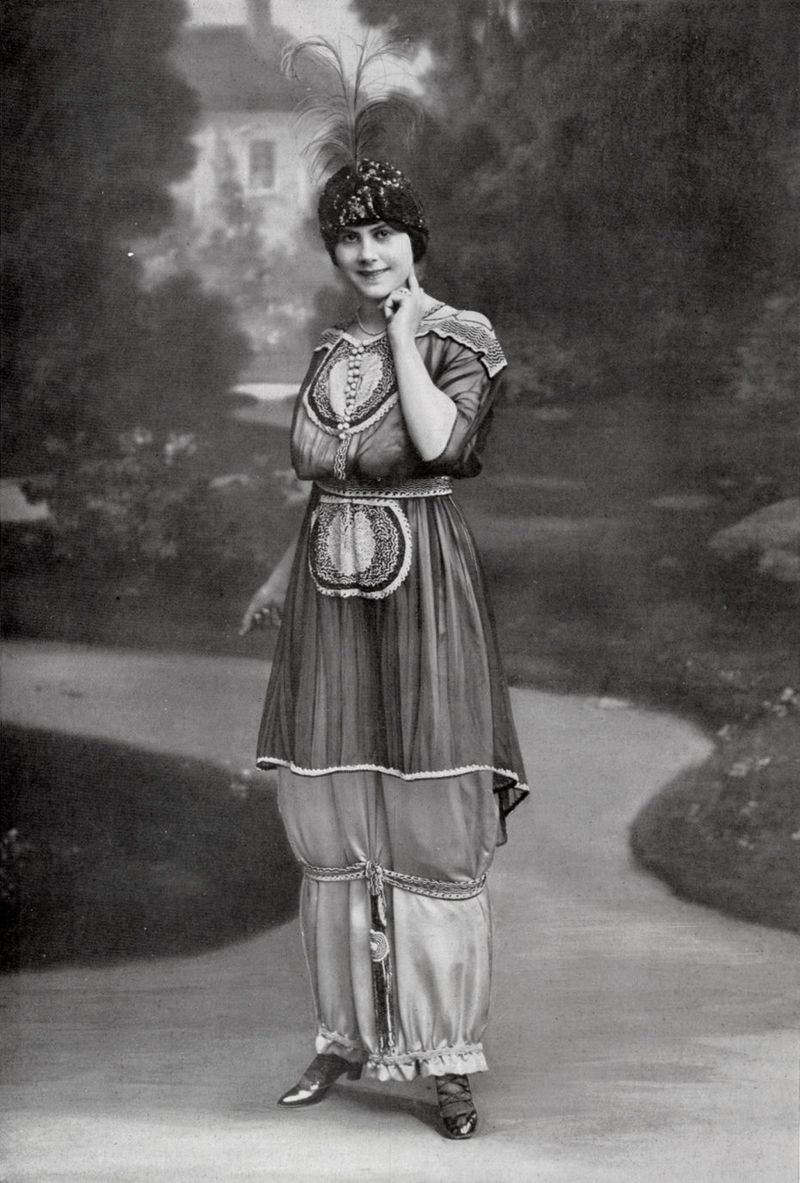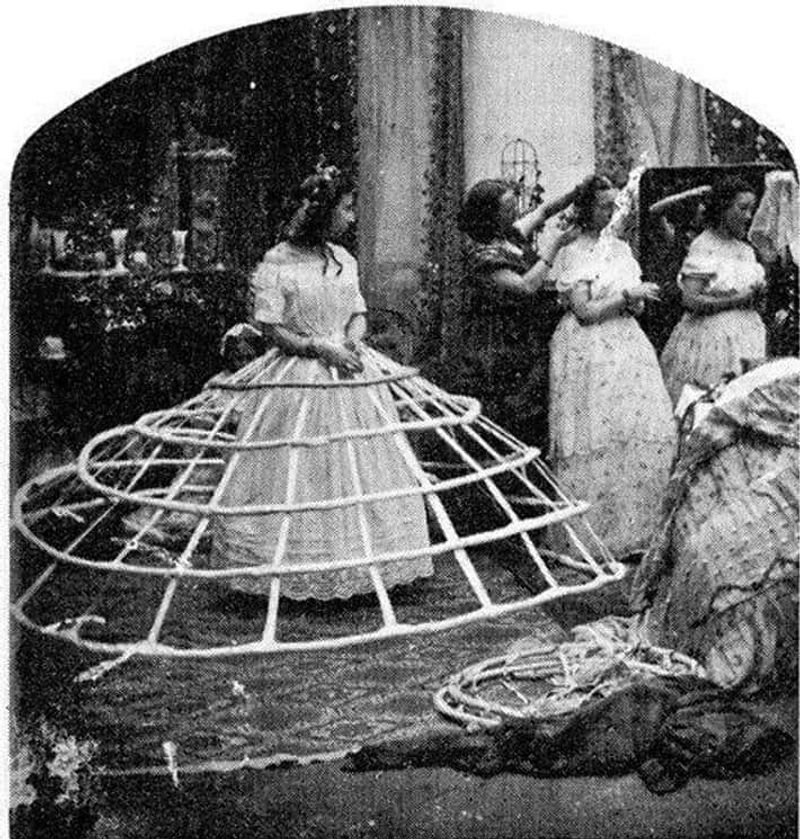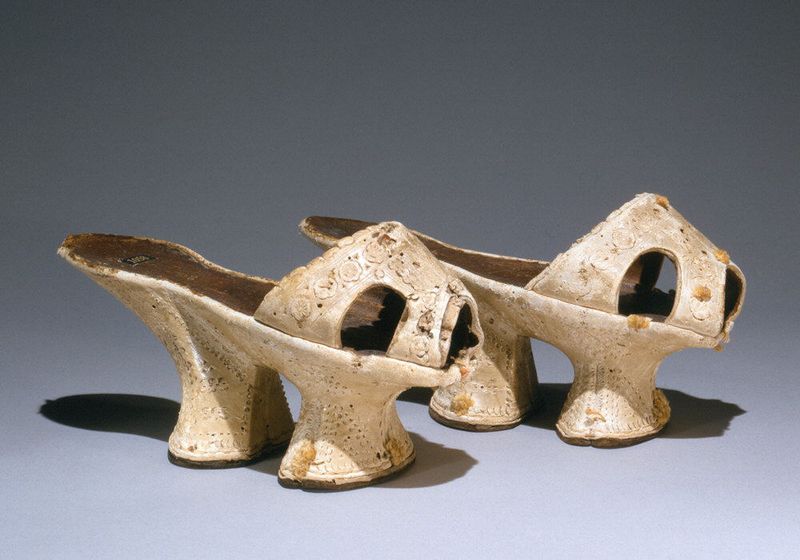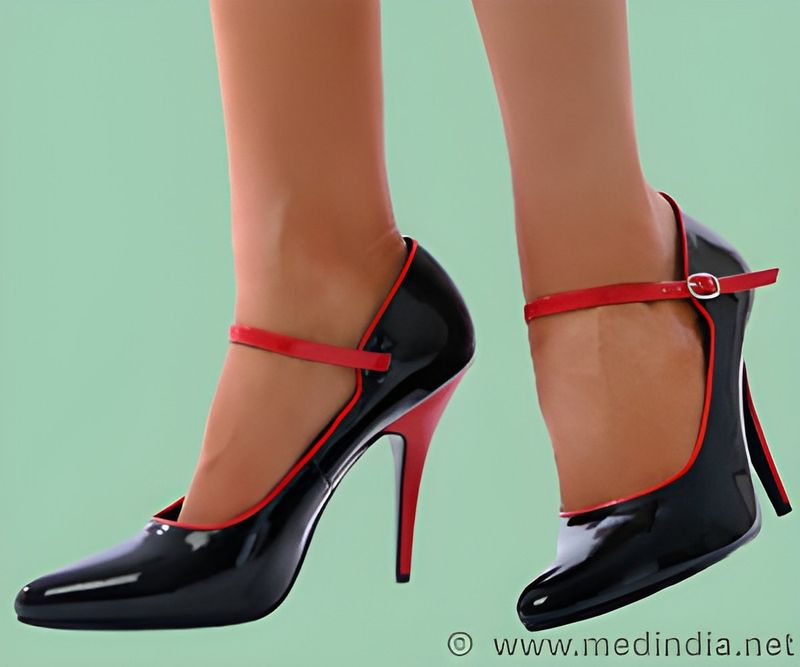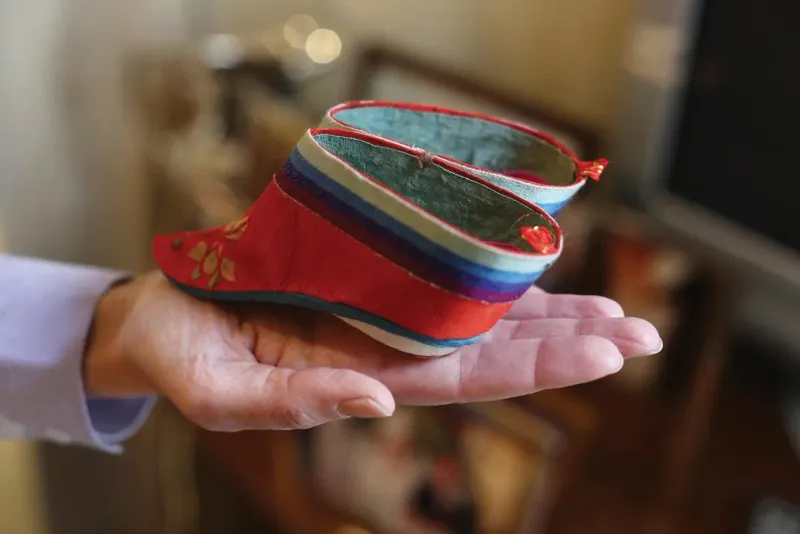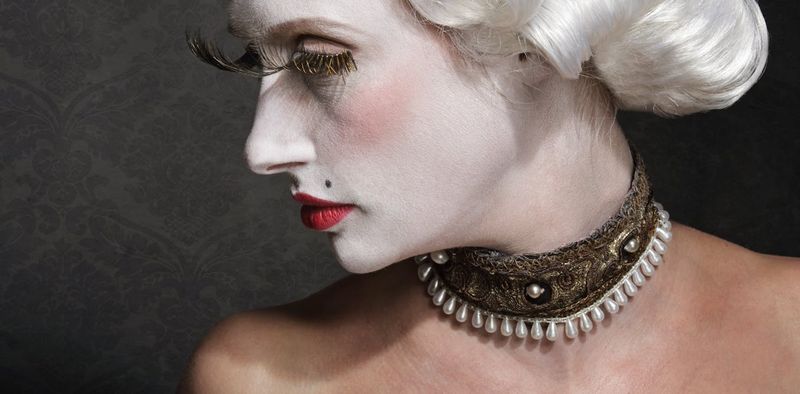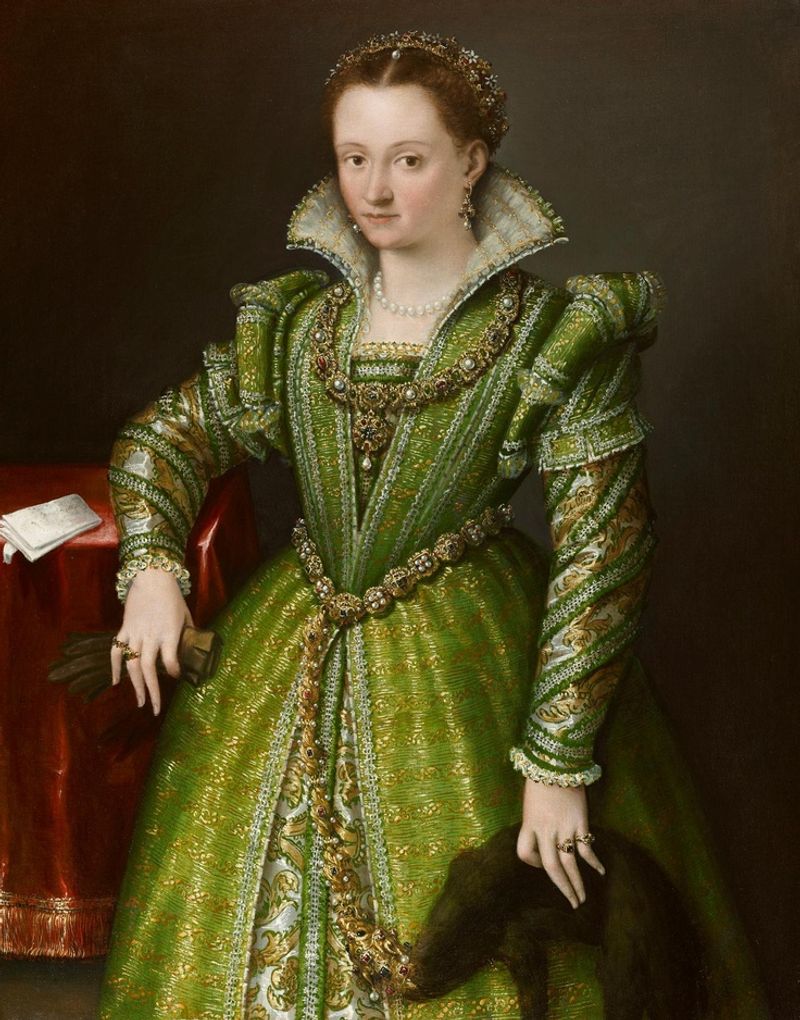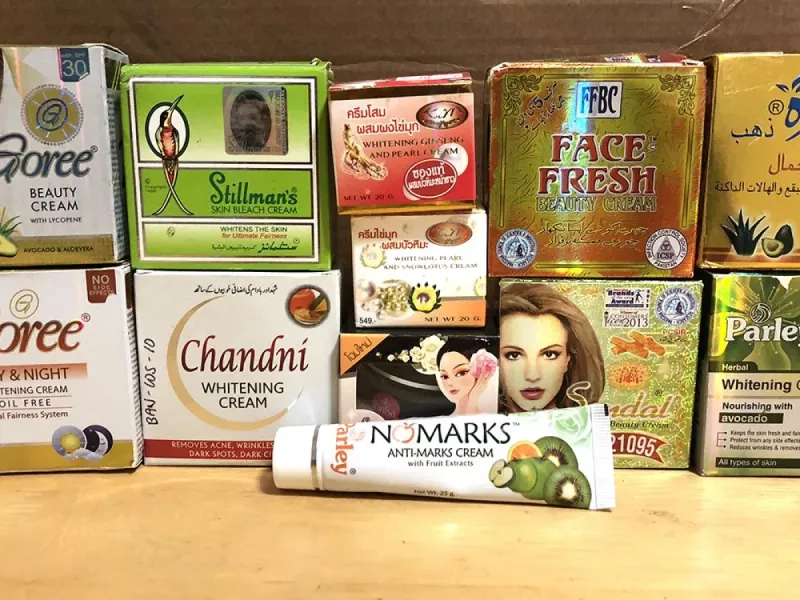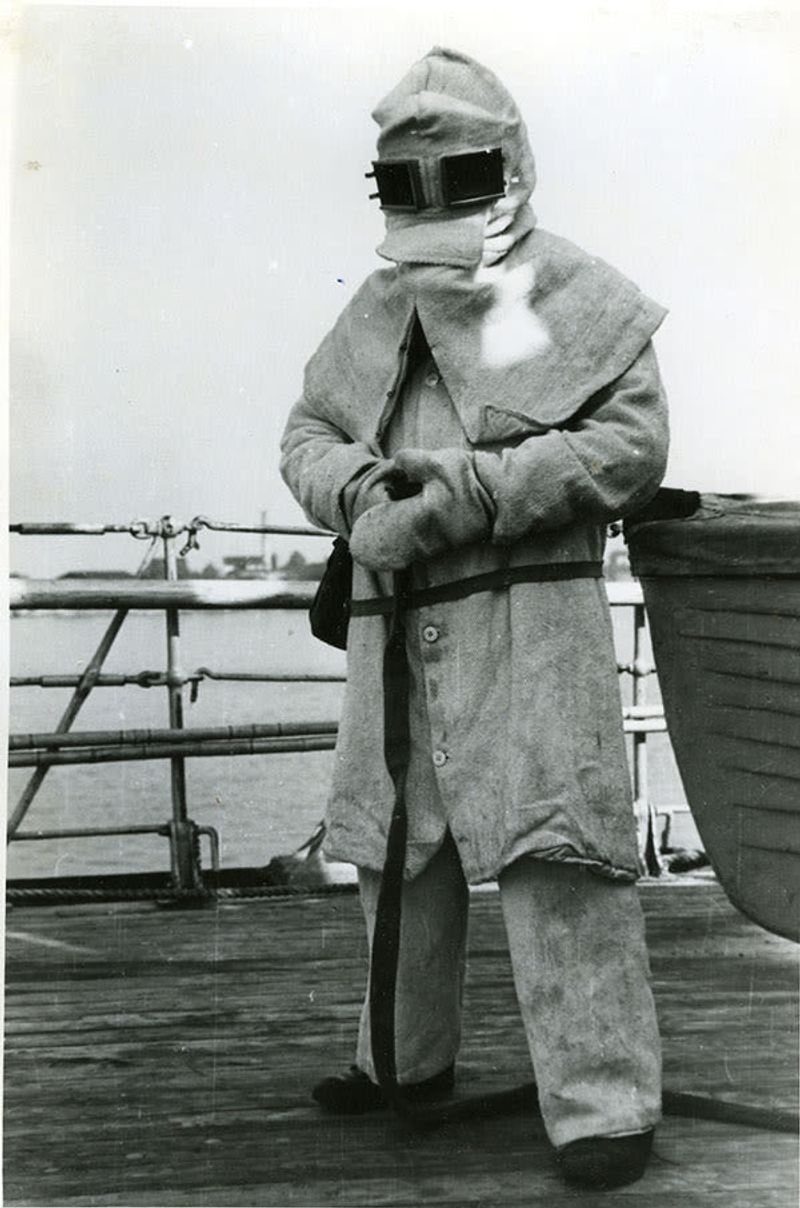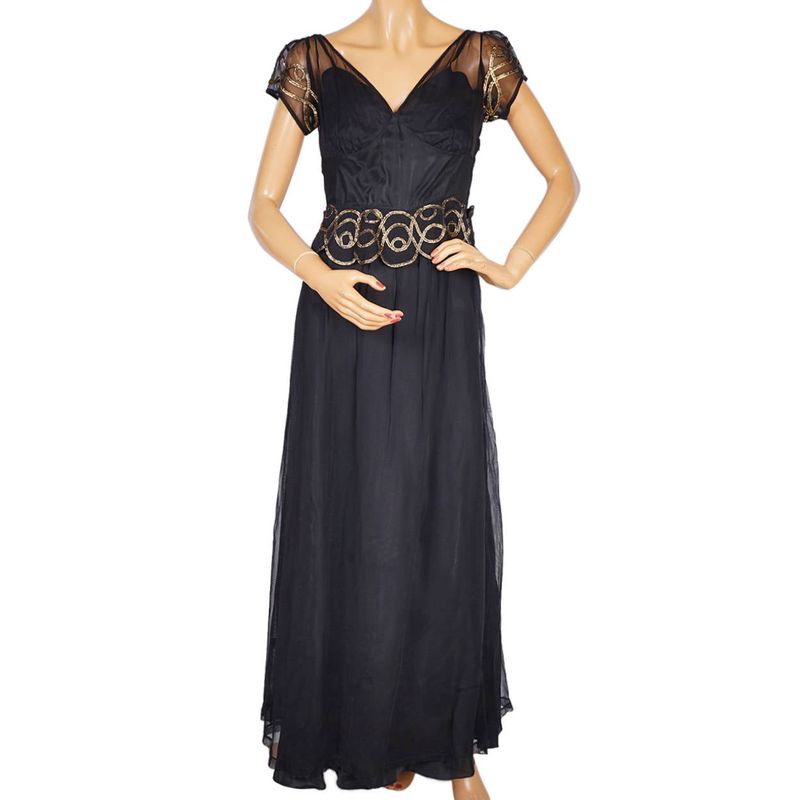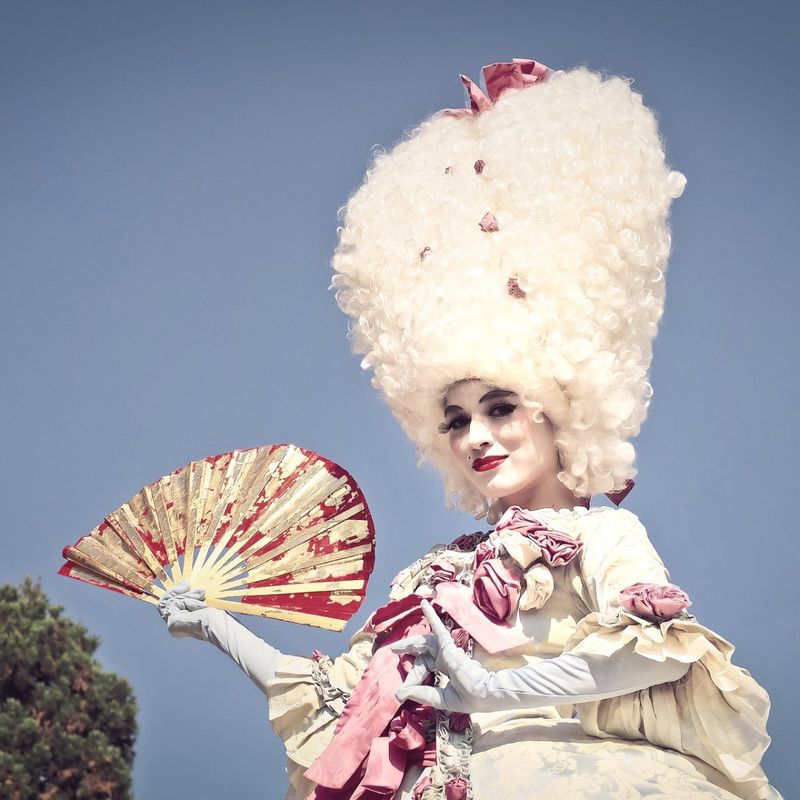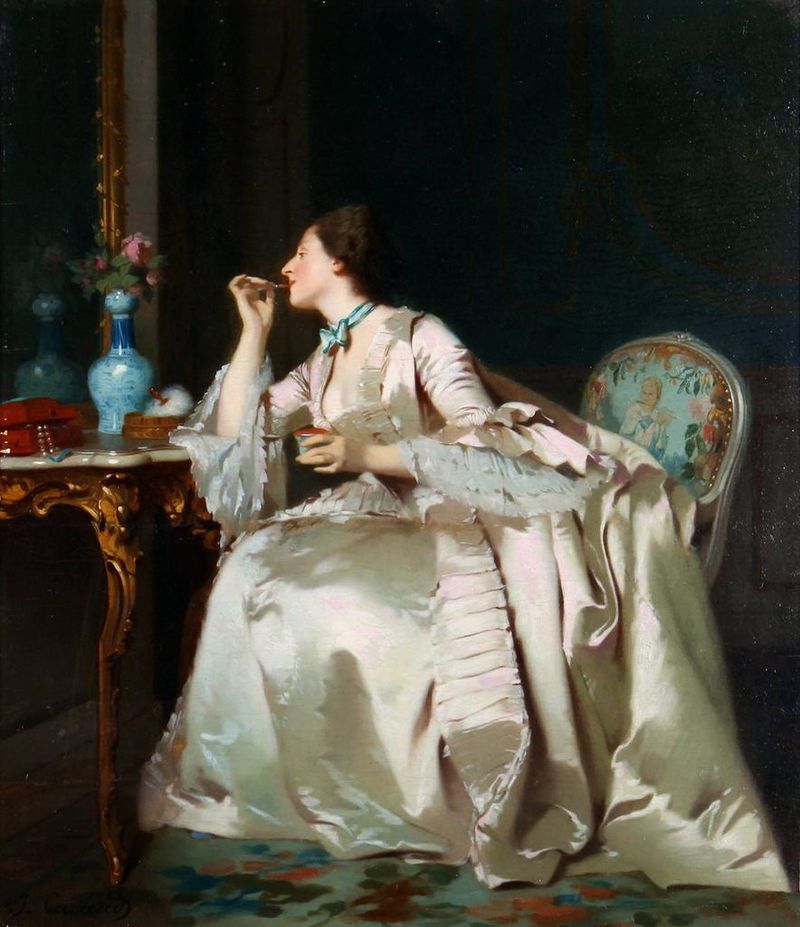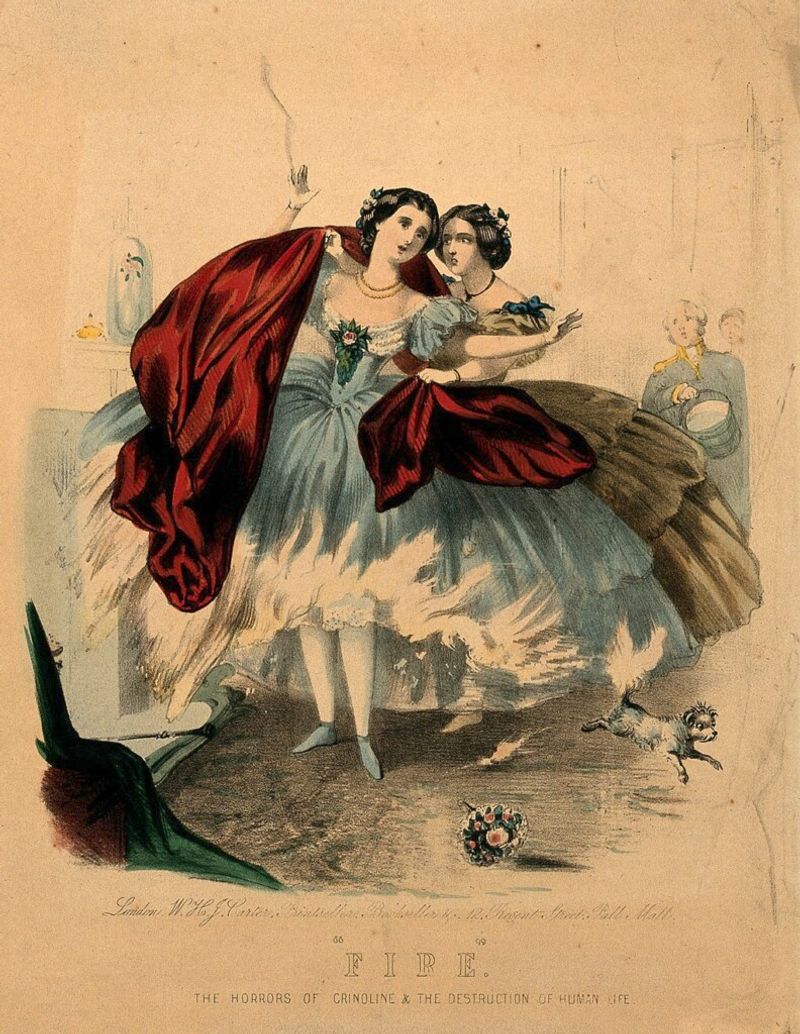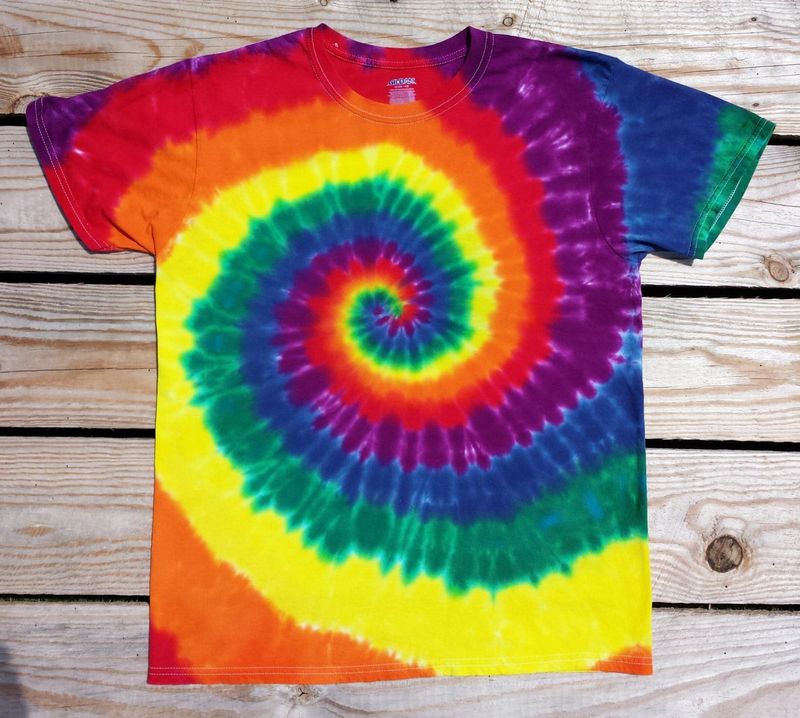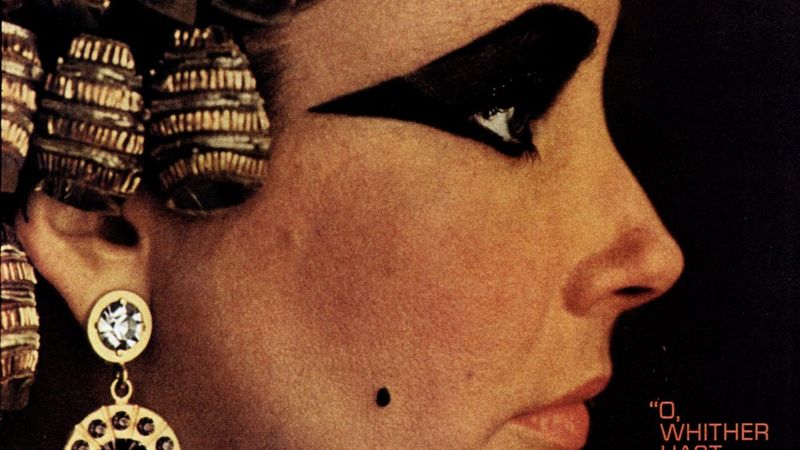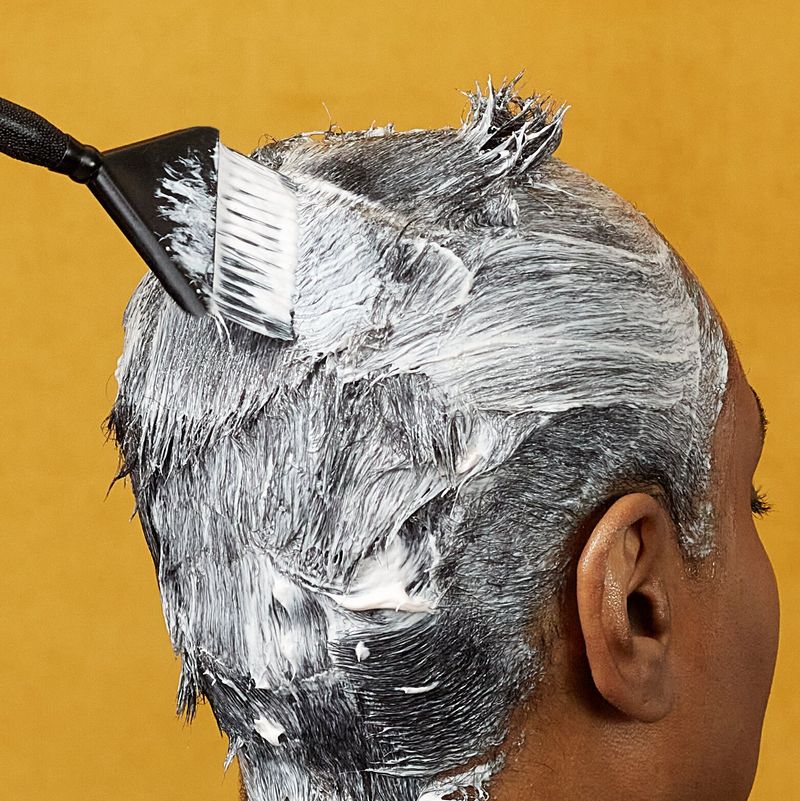Fashion has always been about making a statement, but sometimes those statements come with deadly consequences. From corsets that squeezed the life out of wearers to shoes that could quite literally bring you down, history is full of trends that prioritized aesthetics over health. Join us as we explore 20 of the most perilous fashion choices that have graced runways and wardrobes over the centuries.
1. Victorian Tight-Laced Corsets (mid-1800s)
Ah, the Victorian corset, a garment that promised an hourglass figure but delivered rib-cracking reality. Designed to sculpt women’s bodies into society’s ideal shape, these corsets cinched waists to perilous proportions.
The pressure on internal organs was immense, sometimes causing fainting spells, internal bleeding, and even permanent organ damage. For many, wearing a corset was synonymous with suffering for beauty’s sake.
Despite the discomfort, these corsets remained a symbol of elegance and femininity in Victorian society. The health risks, however, often left a lasting impact far beyond their fashion era.
2. Steel-Boned “Medical” Corsets (early 1900s)
Steel-boned corsets, marketed as medical marvels, promised posture correction but delivered bruises and injuries. Unlike their Victorian predecessors, these corsets came with metal reinforcements.
Thought to improve health by straightening the spine, they often resulted in more harm than good. The rigid steel could bruise skin, injure ribs, and cause severe discomfort during daily activities.
While they were supposed to be therapeutic, many who wore them found the opposite true. This fashion “innovation” proved once again that style often came at a high price for women’s health.
3. Hobble Skirts (1910s)
The hobble skirt might have looked chic, but walking in one was a real challenge. These skirts featured a narrow hem, severely restricting stride length.
Women wearing hobble skirts often found themselves stumbling, falling, and sometimes even breaking bones. Despite the obvious hazards, the hobble skirt became a fashion statement for the daring.
It was the ultimate test of grace under pressure, as navigating stairs or stepping into carriages became potential disasters. This trend epitomized how fashion often took precedence over practicality, no matter the risk.
4. Hoop/Crinoline Skirts (1850s–60s)
Hoop skirts, or crinolines, turned heads with their voluminous silhouettes but posed serious dangers. Supported by wire cages, these skirts could catch fire easily, especially when near open flames.
Movement was cumbersome, with the risk of getting caught in machinery or furniture. Yet, despite these risks, the hoop skirt remained a symbol of opulence and style.
The fire hazard was particularly alarming; many women suffered severe burns or worse. This trend starkly illustrated the tension between fashion’s dramatic flair and the very real dangers it could carry.
5. Venetian Chopines (15th–17th c.)
Venetian chopines elevated wearers to new heights, literally. These towering wooden platforms, sometimes reaching 20 inches, were the ultimate status symbol.
However, walking in these was no small feat. The risk of twisting an ankle or falling was a constant danger. Yet, they remained popular among the nobility, who often required assistance to walk.
These shoes showcased wealth and social standing, but at a potentially painful cost. Despite their impracticality, chopines were a fashion statement that many were willing to risk life and limb for.
6. Stiletto Heels (1950s–present)
Stiletto heels are the epitome of chic but tread carefully. These thin, high heels can puncture soft surfaces and easily lead to ankle sprains.
Yet, their allure is undeniable, elongating legs and adding a touch of elegance to any outfit. The challenge of mastering them is part of their charm, but missteps can be painful.
Despite the risks, stilettos have remained a staple in fashion, embodying both sophistication and danger. For many, the confidence boost they provide is worth the precarious balance they require.
7. Platform Shoes (1970s)
Platform shoes took the 1970s by storm, adding inches and style to any ensemble. However, maintaining balance in these thick-soled shoes was tricky.
Many a disco-goer found themselves toppling over, victims of twisted ankles or worse. Despite their dangers, platforms were a fashion must-have, symbolizing the bold and carefree spirit of the era.
Their exaggerated height and unique design made them iconic, but not without risk. Dancing the night away in platforms was both a fashion statement and a test of one’s agility.
8. Chinese Foot-Binding Shoes (10th–20th c.)
Foot-binding shoes, symbols of beauty, were also instruments of pain. Designed for bound feet, these tiny shoes represented an ideal of delicacy in imperial China.
The binding process was excruciating, leading to permanent deformity and crippling pain. Yet, these shoes were prized, signifying status and femininity.
Women endured lifelong discomfort and health issues from this practice, all in the name of beauty. Such shoes serve as a poignant reminder of the lengths to which society has pushed individuals to conform to a narrow standard of beauty.
9. Lead-Based Whiteface Makeup (18th c.)
In the 18th century, achieving a porcelain complexion meant risking one’s health. Whiteface makeup, or “ceruse,” was laden with lead, causing serious skin and health issues.
Users suffered from skin lesions, hair loss, and eventually lead poisoning. Yet, this deadly makeup was a beauty staple among the upper classes.
The pursuit of a flawless visage overshadowed the visible dangers, reflecting society’s relentless obsession with appearance. This trend serves as a historical example of beauty standards taking priority over personal health.
10. Arsenic-Green Dresses (Victorian era)
Victorian fashion turned toxic with the advent of vibrant arsenic-green dyes. While the color captivated many, the risks were insidious.
Arsenic-laden fabrics could poison wearers, causing skin eruptions and other serious health issues. The allure of the color, however, overshadowed the perilous consequences.
These dresses were a literal fashion statement, embodying the period’s fascination with vivid hues. This trend highlighted the often unseen dangers lurking beneath the surface of seemingly beautiful attire.
11. Mercury Skin-Lightening Creams (19th–20th c.)
Mercury-based skin-lightening creams promised brighter skin but delivered toxic results. These creams, popular in the 19th and 20th centuries, contained mercury, leading to poisoning and serious health issues.
Users experienced tremors, kidney damage, and neurological problems, paying a high price for a lighter complexion. Despite these risks, such products remained in demand, revealing society’s fixation on skin tone.
The devastating health effects underscore the dangers of unregulated beauty practices from history, serving as a cautionary tale for modern cosmetic use.
12. Asbestos Fireproof Clothing (1940s–60s)
Asbestos was once hailed as a miracle material, promising fire resistance. Fireproof clothing made from asbestos seemed revolutionary but carried deadly consequences.
Prolonged exposure to asbestos fibers led to mesothelioma, a severe form of cancer. Despite the known risks, these garments were widely used, especially among firefighters.
The asbestos clothing trend exemplifies how early industrial advancements often overlooked long-term health impacts. These garments serve as a somber reminder of the hidden dangers lurking in seemingly protective apparel.
13. Flammable Rayon & Tulle Gowns (1920s–30s)
Rayon and tulle gowns lit up the 1920s and 30s with their glamour—and sometimes literally. These early synthetic fabrics were highly flammable, easily catching fire from a stray spark.
Despite the risks, their lightweight and flowing qualities made them popular for evening wear. The elegance they offered was enticing, but the dangers were ever-present.
This trend serves as a stark reminder of the need for safety in fashion, where beauty often came at the expense of significant risk. Many lessons in material safety were learned the hard way.
14. Toxic Neon & Fluorescent Dyes (1960s)
The 1960s were all about bold colors, but the neon and fluorescent dyes used were anything but safe. These dyes were packed with heavy metals, leading to skin irritation and other health issues.
Despite the risks, these vibrant hues were synonymous with the decade’s rebellious spirit. The vivid colors captured attention and imagination, becoming emblematic of the era’s fashion trends.
This period serves as a lesson in the unforeseen hazards of chemical dyes, where the pursuit of striking aesthetics sometimes overshadowed safety.
15. Towering Hair Poufs with Lead Powders (late 1700s)
Late 1700s hair fashion reached new heights with towering poufs stiffened with lead powders. These elaborate hairstyles were all the rage among the elite, but came at a high health cost.
Lead powder, used to keep the poufs in place, resulted in poisoning and other health problems. Yet, the desire for opulent coiffures overrode the dangers.
This trend underscores the historical lengths people have gone for style, where the pursuit of grandeur often risked personal well-being. These hair poufs were a testament to fashion’s enduring influence.
16. Toxic Hair Pomades & Powders (18th–19th c.)
In the 18th and 19th centuries, hair pomades and powders offered shine and style but also hidden dangers. Infused with arsenic and lead, these products led to health issues ranging from skin irritation to systemic poisoning.
Despite these risks, they were widely used to achieve the fashionable hairdos of the day. The desire for glossy locks often blinded users to the hazardous ingredients they were applying.
This trend highlights how appearances often overrode health considerations, where the quest for style could lead to severe consequences.
17. Formaldehyde-Starched Dresses (1920s–1940s)
Formaldehyde was the secret behind the crisp pleats of dresses from the 1920s to the 1940s. While these garments looked immaculate, they emitted toxic fumes.
Exposure to formaldehyde could lead to skin irritation and respiratory problems, making the dresses as hazardous as they were stylish. Yet, the allure of perfectly pressed fashion was hard to resist.
This trend exemplifies the ongoing tension between style and safety, where the pursuit of a particular look sometimes came at the cost of one’s health.
18. Azo-Dyed Tie-Dye Shirts (1960s–1970s)
Tie-dye shirts exploded in popularity during the 1960s and 70s, becoming a symbol of the counterculture movement. However, many of these vibrant patterns were achieved using azo dyes.
These dyes posed health risks, with some being carcinogenic and causing allergic reactions. The allure of the psychedelic aesthetic often masked the potential dangers.
This trend serves as a reminder of the unforeseen consequences of chemical use in fashion, where the quest for creative expression sometimes overlooked safe practices.
19. Lead-Based Kohl Eyeliner (Ancient–Medieval)
Kohl eyeliner has adorned eyes since antiquity, creating striking looks but at a cost. Made from lead salts, this makeup essential could cause eye infections and systemic lead poisoning.
Despite the risks, kohl remained a staple in beauty routines across various cultures. Its deep, dramatic lines offered allure that overshadowed the health dangers.
From ancient Egypt to medieval times, kohl exemplified the timeless pursuit of beauty, often at the expense of well-being. This trend reveals the age-old conflict between aesthetics and health safety.
20. Lye-Based Hair Relaxers (20th Century)
Lye-based hair relaxers offered sleek, straight tresses but exposed users to harsh chemicals. Rich in sodium hydroxide, these relaxers could irritate the scalp and cause burns.
The desire for smooth hair often overshadowed the risks involved in the chemical process. Salon-goers endured discomfort for the sake of style, reflecting society’s emphasis on certain beauty standards.
This trend serves as a cautionary tale of beauty industry’s chemical reliance, where the quest for a specific look could compromise one’s health and safety.
